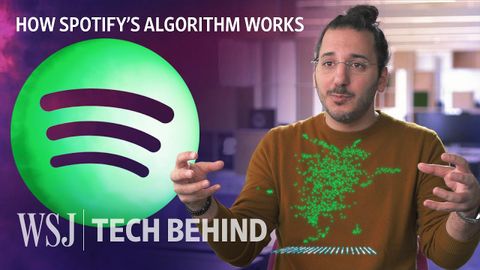愛用音樂串流平台的你,是否想過推薦播放清單是怎麼來的?了解 Spotify 背後的演算法吧!(How Spotify’s AI-Driven Algorithm Works | The Tech Behind | WSJ)
 沒有此條件下的單字
沒有此條件下的單字US /ˈkɑnˌtɛkst/
・
UK /ˈkɒntekst/
- n. (c./u.)上下文 ; 背景 ; 來龍去脈;背景;環境;語境
US /ˈkɑnˌtɛnt/
・
UK /'kɒntent/
- adj.滿足的;滿意的
- n. (c./u.)內容;主題;內容;滿意;內容 (數位);含量
- v.t.使…滿足
- v.i.同意
US /məˈtɪriəl/
・
UK /məˈtɪəriəl/
- n. (c./u.)布料;素材;資料;材料;物質
- adj.重要的;物質的
US /ˌrɛkəˈmɛnd/
・
UK /ˌrekə'mend/
